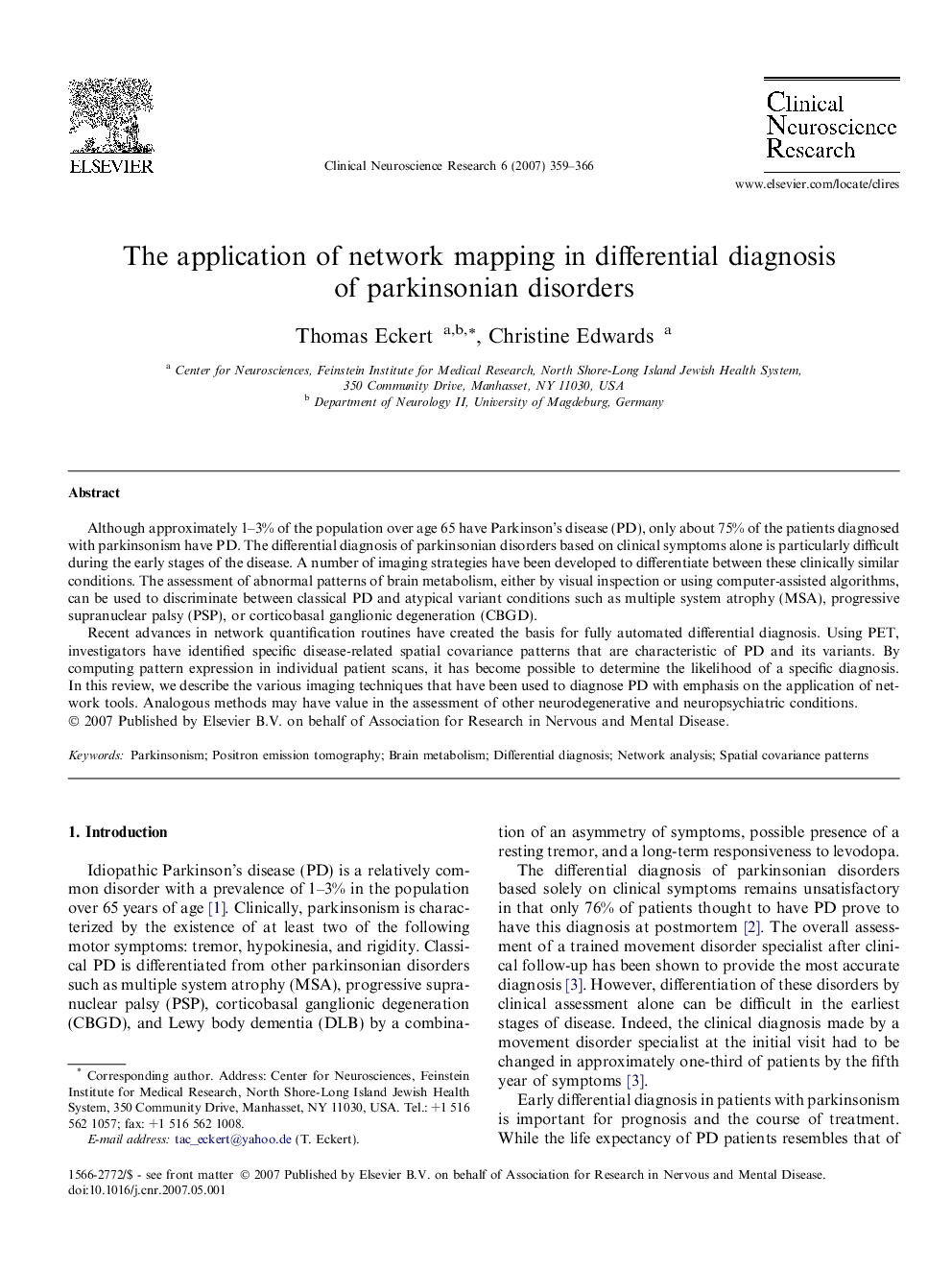| Article ID | Journal | Published Year | Pages | File Type |
|---|---|---|---|---|
| 3049237 | Clinical Neuroscience Research | 2007 | 8 Pages |
Although approximately 1–3% of the population over age 65 have Parkinson’s disease (PD), only about 75% of the patients diagnosed with parkinsonism have PD. The differential diagnosis of parkinsonian disorders based on clinical symptoms alone is particularly difficult during the early stages of the disease. A number of imaging strategies have been developed to differentiate between these clinically similar conditions. The assessment of abnormal patterns of brain metabolism, either by visual inspection or using computer-assisted algorithms, can be used to discriminate between classical PD and atypical variant conditions such as multiple system atrophy (MSA), progressive supranuclear palsy (PSP), or corticobasal ganglionic degeneration (CBGD).Recent advances in network quantification routines have created the basis for fully automated differential diagnosis. Using PET, investigators have identified specific disease-related spatial covariance patterns that are characteristic of PD and its variants. By computing pattern expression in individual patient scans, it has become possible to determine the likelihood of a specific diagnosis. In this review, we describe the various imaging techniques that have been used to diagnose PD with emphasis on the application of network tools. Analogous methods may have value in the assessment of other neurodegenerative and neuropsychiatric conditions.
